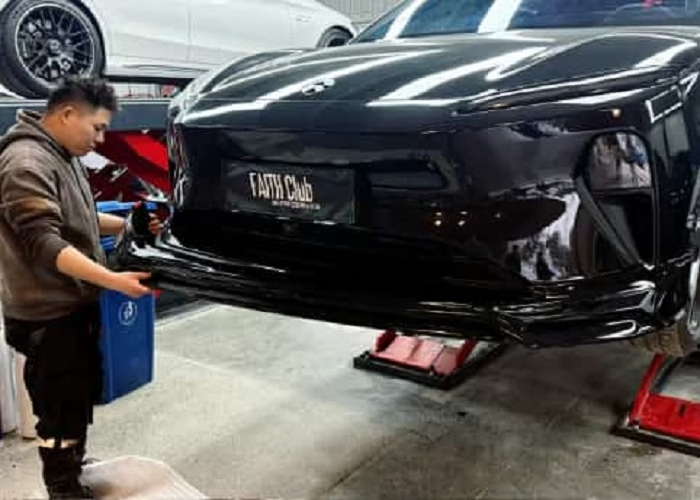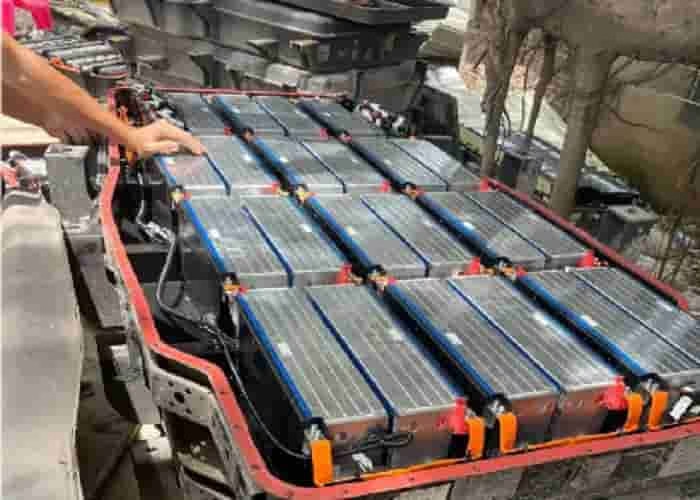On June 1, the data of new energy vehicles came out! Who is lagging behind? On the evening of June 1, BYD announced in the Hong Kong stock market that the company’s sales in May were 382,500 vehicles, a year-on-year increase of 15.27%. From January to May, the company’s cumulative sales reached 1.7634 million vehicles, a year-on-year increase of 38.70%.
On the same day, the “report card” for May submitted by new energy vehicle companies showed that Leapmotor and Ideal Auto led in delivery volume, and Xiaopeng Auto’s year-on-year growth rate still ranked first.
As a star car company, Xiaomi Auto’s monthly delivery volume is still stagnant. In May, Xiaomi Auto’s delivery volume exceeded 28,000 vehicles, and it failed to cross the threshold of 30,000 monthly deliveries for three consecutive months.
The competition landscape of domestic new energy vehicle companies may be more intense in the next few months. In May, many car companies renewed their products or launched new products, and the delivery volume in June and July will increase significantly.
- Competition among leading new car-making forces intensifies, and 40,000 vehicles per month may be a new threshold
In May, Leapmotor’s delivery volume hit a new high of 45,100 vehicles, a year-on-year increase of 148.10% and a month-on-month increase of 9.82%.
By comparison, Leapmotor’s monthly delivery volume has ranked first among new car-making forces for three consecutive months.
Recently, Zhu Jiangming, founder, chairman and CEO of Leapmotor, said that since the early days of its entrepreneurship in 2015, the Leapmotor team has adhered to the strategy of self-developed core technologies in the entire domain, and established a technical advantage with controllable cost and quality.
It is reported that through technological innovation and technological cost reduction, allowing users to spend less money to enjoy higher configurations has become one of the focuses of Leapmotor’s publicity.
On May 15, Leapmotor’s 2026 C10 was officially launched, with a national guide price of 122,800 yuan. Leapmotor introduced that the company will provide high-end configurations such as 800V high-voltage platform, end-to-end laser radar assisted driving, and million-yuan luxury car-level chassis technology to the 140,000 yuan market. Unlike Leapmotor, which delivered more than 40,000 vehicles in April, Li Auto delivered 40,900 vehicles in May, up 16.70% year-on-year and 20.38% month-on-month. Unlike the monthly deliveries in 2024, which were repeatedly “outperformed”, Li Auto’s monthly deliveries in the first five months of 2025 were repeatedly surpassed by other new car-making forces, and the monthly deliveries in January, February and April fell month-on-month. Today, Li Auto’s monthly delivery growth rate has turned positive again. Li Xiang, chairman and CEO of Li Auto, said: “In the past month (May), Li Auto has completed the smart renewal version upgrade of all models.” In May, the Li L series smart renewal version was officially released. Li Xiang introduced that all models, including Li L6Pro, are equipped with all-weather laser radars as standard, with the industry’s highest level of automatic emergency braking (AEB) and automatic emergency steering (AES) capabilities. At the same time, Li MEGAHome started delivery in late May. According to the order status, Ideal Auto expects the monthly delivery of Ideal MEGA to reach 2,500 to 3,000 vehicles, which is a 150% to 200% increase compared to the 2024 model. - The competitive landscape of new energy vehicle companies is not stable, and June and July may usher in huge changes
In May, Xiaomi Auto delivered more than 28,000 vehicles, and failed to cross the threshold of 30,000 monthly deliveries for the third time.
Looking back, Xiaomi Auto delivered 29,000 and 28,000 vehicles in March and April, respectively, just one step away from the monthly delivery of 30,000 vehicles.
Since the start of delivery in March 2024, Xiaomi Auto has only launched one model, SU7. In the eyes of car companies, SU7 is already a hit product, but the delivery volume of Xiaomi Auto seems to have reached a bottleneck period.
In order to continue to increase delivery volume, Xiaomi Auto will focus on SUV (sports utility vehicle) models. In late May, Xiaomi Auto’s first SUV model YU7 was unveiled.
On June 1, Lei Jun, founder, chairman and CEO of Xiaomi, posted on Weibo: “We are making every effort to prepare for the large-scale mass production of Xiaomi YU7, which is expected to be mass-produced in July.”
This means that the monthly delivery volume of Xiaomi cars may see a big change in July.
A similar situation is also happening at Ideal Auto. Li Xiang introduced that the company will continue to work hard on the construction of the charging network, and the 2,500th Ideal Supercharging Station will be launched in June, making full preparations for the launch of the first pure electric SUV Ideal i8 in July.
The monthly delivery volume of some new car-making forces may show a big change in June.
Take Weilai as an example. Its delivery volume in May was 22,300 vehicles, a year-on-year increase of 13.08%. People close to the car companies told reporters that several models of Weilai will be launched in late May or at the end of May, and the results may be seen in June. On May 16, NIO’s two 6-series SUVs, the new ES6 and the new EC6, were launched; on May 25, NIO’s smart electric mid-size coupe, the new ET5, and the smart electric station wagon, the new ET5T, were launched.
The above-mentioned person close to the car company introduced that the company’s ten years of scientific and technological research and development achievements have entered a new stage of full vehicle deployment. June is the first full delivery month for the above four new models of NIO.
At the same time, the first version of “NIO World Model NWM” has been pushed since May 30. The first batch of models is the “Banyan” model with more than 400,000 units. At the end of June, it will be pushed to the “Cedar” model, including ET9, new ES6, new EC6, new ET5, new ET5T, etc. - Active changes in car companies are frequent, and delivery volume has become an important support factor for profitability
Active change is a breakthrough strategy for many new energy vehicle companies. In May, the delivery volume of NIO’s second brand Ledao reached 6,281 vehicles, a month-on-month increase of 42.8%.
Previously, NIO made substantial adjustments to Ledao’s organizational structure. Li Bin, chairman and CEO of Weilai, said on May 31 that there have been many changes. Without the “volume price”, Ledao’s deliveries in May increased by at least 40%. Xiaopeng Motors, which made changes earlier, has delivered more than 30,000 vehicles per month for seven consecutive months. In May, Xiaopeng Motors’ monthly deliveries reached 33,500 vehicles, a year-on-year increase of 230.43%. From January to May, Xiaopeng Motors’ cumulative deliveries were 162,600 vehicles, a year-on-year increase of 293%. “Looking forward to the fourth quarter of 2025, I am very confident that profits and sales will double, and it may even exceed this expectation.” He Xiaopeng, chairman and CEO of Xiaopeng Motors, said on May 31 that in the face of fierce domestic and international competition, the core of corporate development is to build a good internal organization and management system. Delivery volume (sales) is an important factor in whether a car company can make a profit. As one of the earliest new forces in car manufacturing, “Wei, Xiao, and Li” currently only Ideal Auto is profitable. Weilai and Xiaopeng Motors have previously set a goal to make a profit in the fourth quarter of 2025. At the same time, new energy vehicle companies under central enterprises such as Deep Blue Auto and Avita have previously revealed their profit timetables. Recently, Zhang Deyong, secretary of Changan Automobile, said: “When Deep Blue Auto’s monthly sales reach 30,000 vehicles, it can achieve a break-even point, which is expected to be achieved this year.”
The controlling shareholders of Deep Blue Auto and Avita are both Changan Automobile. From January to May, Deep Blue Auto’s deliveries were 24,600, 18,700, 24,400, 20,100, and 25,500 respectively.
Zhang Deyong further stated that Avita is still in the investment period in 2025, and it is more difficult to reach the break-even point than Deep Blue Auto. It is expected to reach the break-even point in 2026.
At present, Avita’s monthly sales remain at around 10,000 vehicles, with 10,500, 11,700, and 12,800 vehicles from March to May respectively.
















Leave a Reply